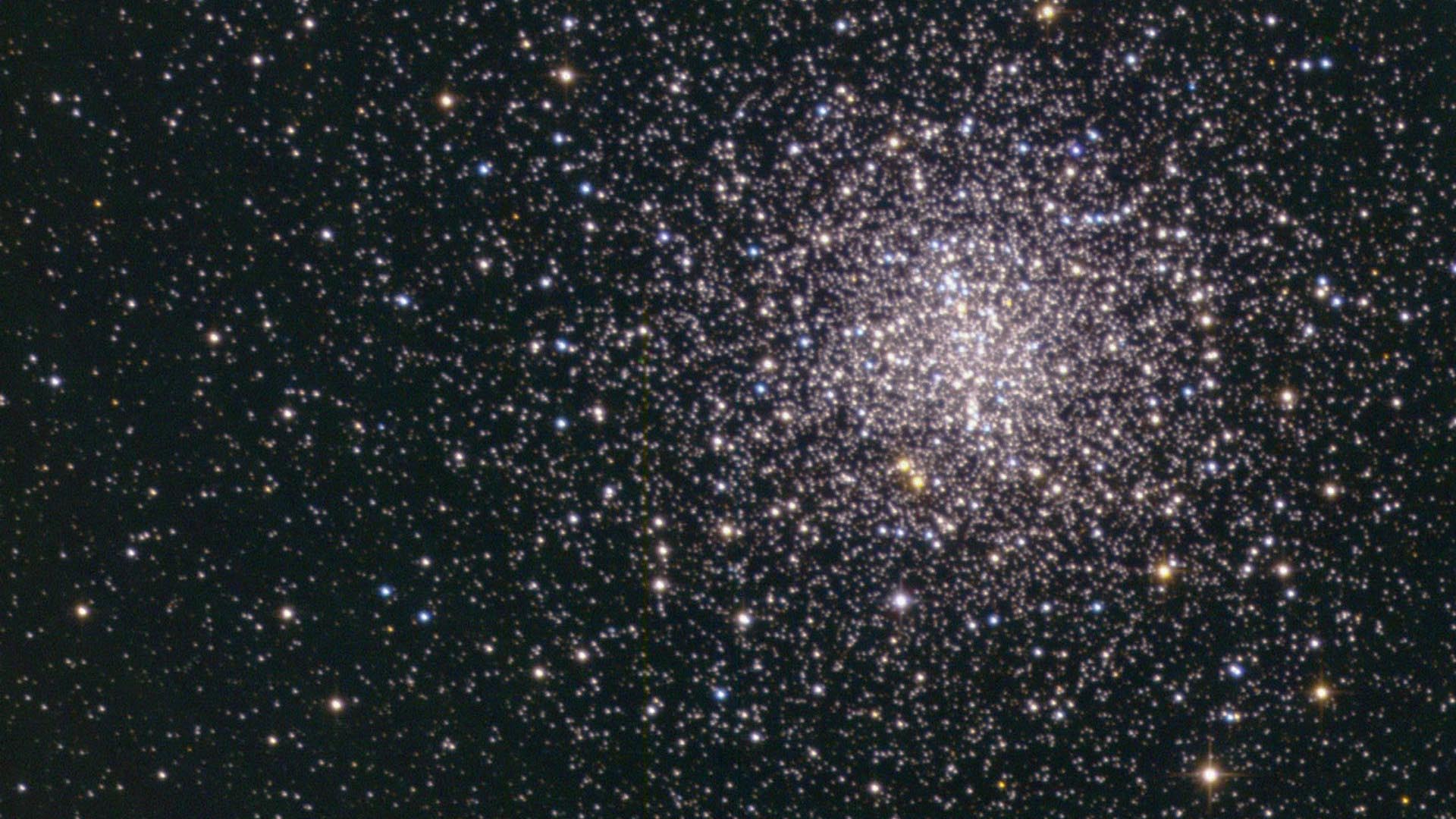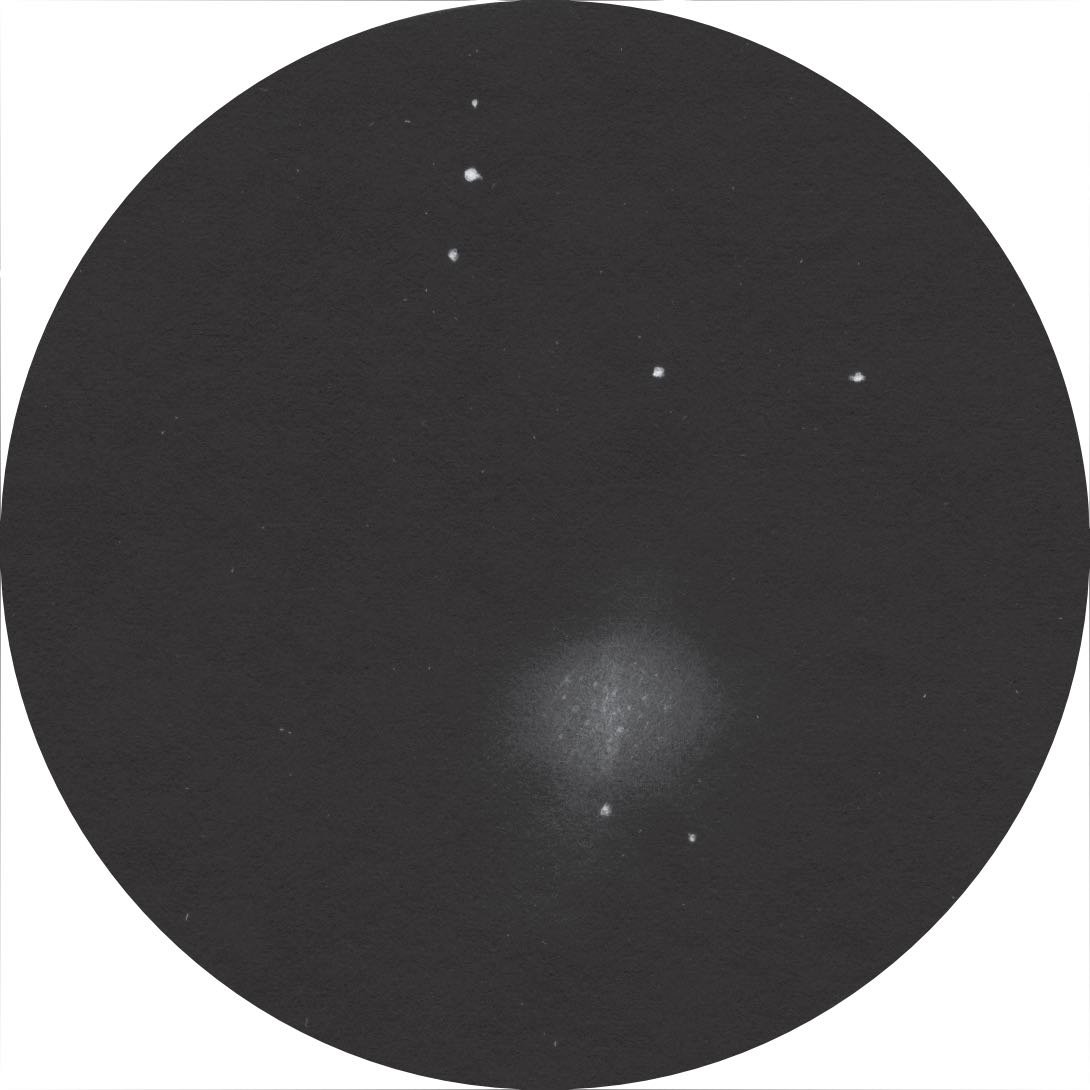A cosmic fossil
Although M4 in Scorpius is the nearest globular cluster to us, observing it is not easy. But it's worth trying.
 M4 is one of the closest globular clusters to us. Rudolf Dobesberger
M4 is one of the closest globular clusters to us. Rudolf DobesbergerThere are numerous bright nebulae and clusters to be found in Scorpius. This makes it a popular destination for many observers and photographers. However, it is difficult to observe from Central Europe. There are only a few nights in the year that offer the perfect combination of a good view towards the horizon, sufficient darkness, and clear sky. But when the conditions are right, objects like the bright globular cluster M4 are a magnet for observers.
M4 was discovered in 1745/1746 by Philippe Loys de Chéseaux, and Charles Messier added it to his catalogue in 1764. Messier was also able to resolve M4 into very faint individual stars, thereby being the first to succeed in doing this with a globular cluster.
Globular cluster on our doorstep
At a distance of around 7,200 light-years, M 4 is our closest globular cluster, which can be observed with amateur instruments. Only cluster FSR 1767, discovered using infrared in 2006 is, at 4,900 light-years distance, even closer. At 12.2 billion years old, we are looking a cosmic fossil here: the stars in the cluster are all likely to be the same age and therefore represent a relatively primordial composition. Like all globular clusters, M4 circles the centre of the Milky Way on a wide orbit, crossing the galactic disk again and again. Usually many stars within a cluster are lost on these occasions, so that M4 may have lost some of its brightness over time. In addition, the interstellar medium reduces the globular cluster’s brightness by one or two magnitudes.
It all depends on your location
 This is how the globular cluster looks in a small 70-mm telescope at 56×. R. Stoyan
This is how the globular cluster looks in a small 70-mm telescope at 56×. R. StoyanFrom the Southern Hemisphere, if conditions are excellent, M4 can almost be seen with the naked eye as a faint nebulous speck directly next to Antares. In Central Europe, however, observation is made more difficult as M4 is low in the sky and the Sun is not far below the horizon, so that binoculars are definitely needed. These should clearly show a nebulous ball in nice contrast to the orange Antares. The view in the telescope is also highly dependent on your location. Whereas from more southern locations you will only need a 120-mm to 150-mm aperture to resolve individual stars, in Central Europe you will need 200 mm. The most striking feature of M4 is an elongated strip of brighter stars that runs though the globular cluster.
Just half a degree to north-east, NGC 6144 is another, albeit much fainter, globular cluster. Astrophotographers often capture M4 together with the colourful Rho Ophiuchi - Antares region, truly one of the most spectacular subjects in the whole night sky.
Author: Matthias Juchert / Licence: Oculum-Verlag GmbH
